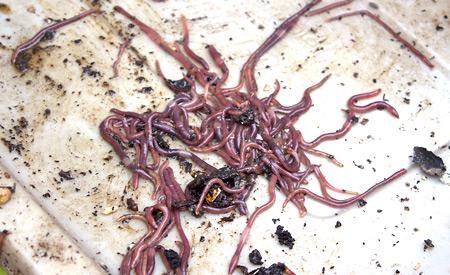A Powell River resident is trying to change the world one worm bin at a time.
Master composter and horticulturalist Carol Engram loves worms.
For more than a decade, Engram has been learning about composting and how to use red wigglers, a practice called vermiculture, to improve soil quality.
Starting out in the garden she knew there was value in composting, but became particularly excited when she saw that working with red wigglers could cut a bunch of steps out of dealing with her waste and fertilizing her garden.
“We spend a large portion of our income on the highest quality food we can, 70 per cent at the most,” she said. “We pay for the waste to be shipped away and then go out and buy organic material to put into the soil. [With worms] we’re taking all those steps out. That gets me excited.”
When the worms finish eating organic waste, they produce, in Engram’s view, one of the best garden fertilizers—their castings.
Engram started taking in what she calls “kitchen leftovers” from people in the community in addition to garden waste to feed her worms. She currently has seven families and three businesses in Powell River, including Brooks Secondary School’s culinary arts program, which provide her with worm food.
The foods worms really like are watermelons, pumpkins and pineapples, but they are not so much into raw onions.
“Anything juicy and sweet,” she said. “They’ll swim in it and live in it. They love it.”
Worms are biologically pretty simple and are really efficient eating machines, she said. Engram describes them as “a little tiny brain, five hearts, crop and gizzard and the rest is stomach.”
Red wigglers, originally from equatorial areas, are community-minded and live very well clumped together which is unlike the “native” earthworms that lead a more solitary existence and do not do well in the bins.
If food is not immediately edible for the worms, then they have to wait for other bacteria to decompose the material to the point where they can consume it.
Engram teaches workshops throughout the year, at Powell River Community Resource Centre, on creating worm bins. The bins can be as simple as putting two Rubbermaid totes together. Important features of a worm bin include a way to keep the bins from sticking together, bottom drainage and lid to keep the moisture contained.
She describes the worms as her passion project not a business. She has a shed at the Inclusion Powell River Society’s Community Living Place where she has her freezer composters and worm bins set up. She employs one individual with a developmental disability.
“I’m experimenting all the time with different types of environments for the worms,” she said.
One experiment that works particularly well is combining a hot freezer composter with the worms, she said.
She said that traditionally people would not put cooked food or meat in their compost, but with the worms, especially those in the freezers which routinely slow cook the compost at temperatures over 120° Fahrenheit (48.8° Celsius), everything goes.
“You’re really not cooking until you’re up around 110 [43.3],” she said, adding that after two days most meats are completely cooked and decomposition is well on its way.
Engram describes her personal philosophy as the less she does the better, so she doesn’t put a lot of effort into preparing the food for the worms, opting instead to just throw veggies in the bins and let the worms have at it.
She creates and sells her own potting soil mix which she calls Alive and Strong. It is made up of composted yard waste mixed with 20 per cent worm castings. She said the name is appropriate because the soil mix is still alive with enzymes and nutrients from the worm castings.
“What this particular mix does is feed your soil,” she said.
For more information about Engram’s workshops or vermiculture, readers can contact her at 604.485.2311.



